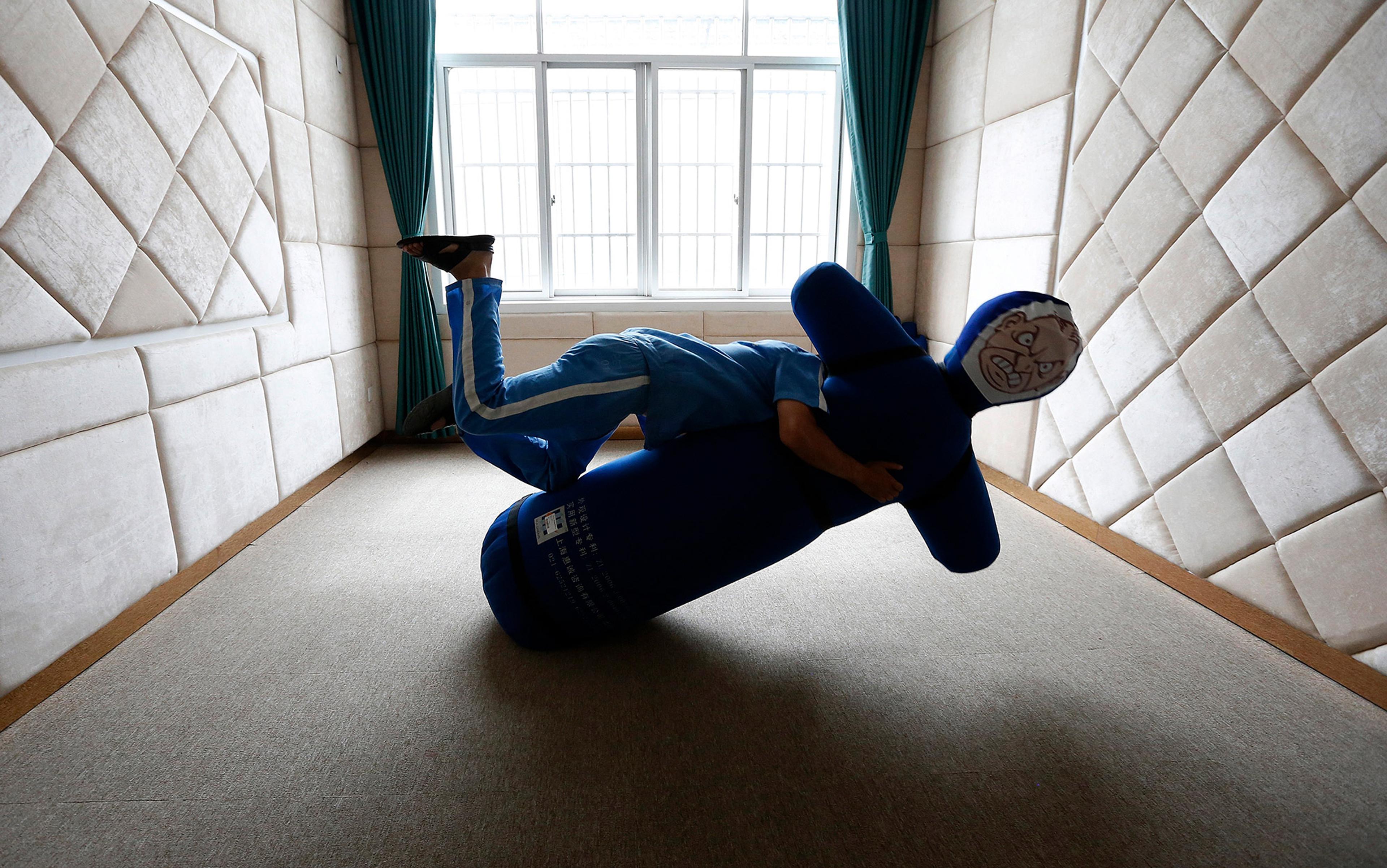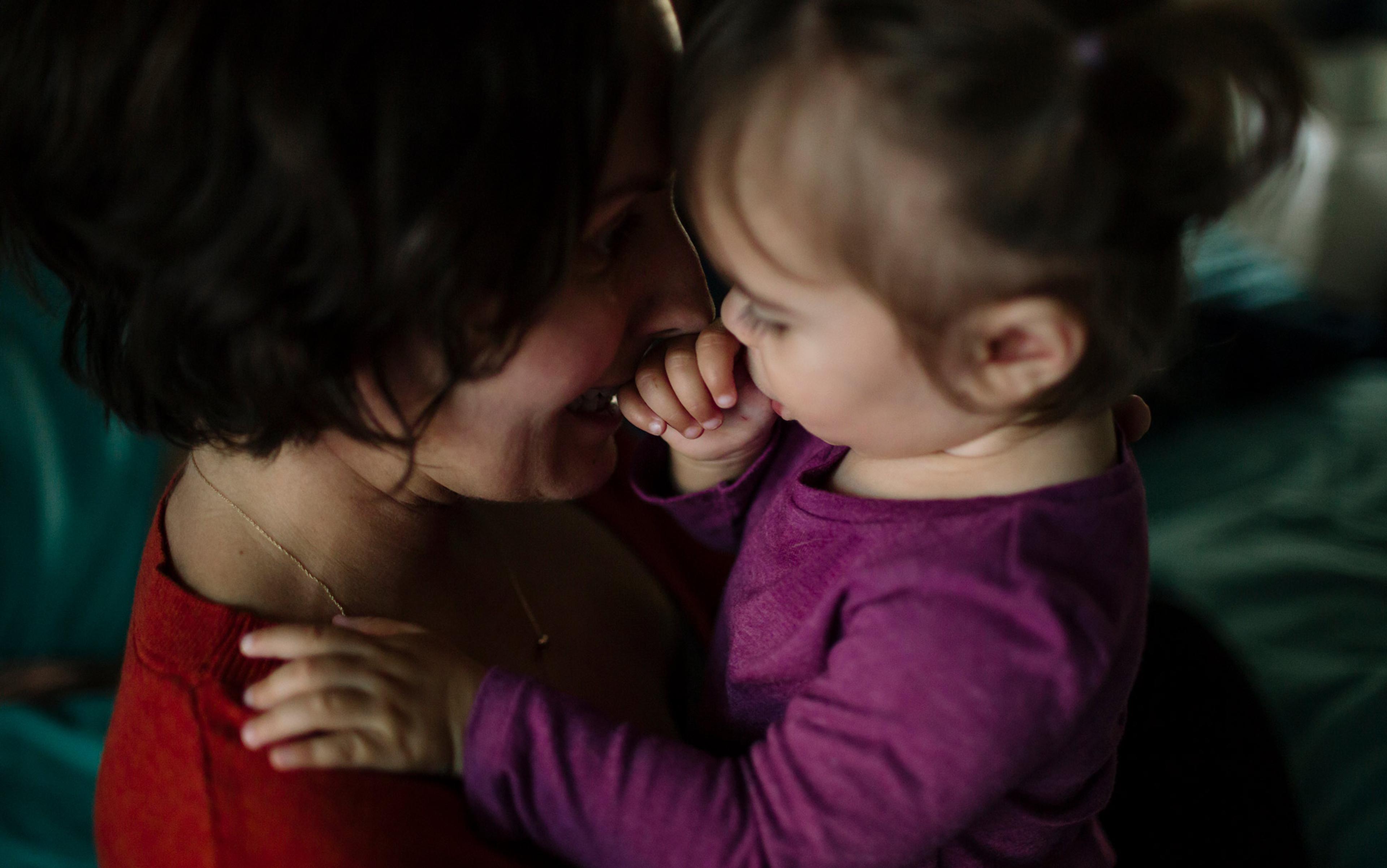Even as more celebrities and athletes speak out about their mental health challenges and the stigma lessens, a mental health crisis looms – especially in the United States. More than 45 million adults – one in five – experience mental illness, and one in 25 are diagnosed with a serious mental illness. The mental health of American children has never been worse, and suicides and drug overdoses are increasing, contributing to the longest sustained decline in life expectancy in more than a century, even as the opposite is true throughout much of the rest of the world.
Juxtaposed with this mental health crisis, news media and headlines tout the benefits of cognitive behavioural therapy (CBT), explicitly recommended as ‘evidence-based’ and said to work rapidly, especially when combined with drugs such as antidepressants or mood stabilisers. Varieties of CBT apply to a host of different diagnoses: dialectical behaviour therapy (DBT) for personality disorder; cognitive processing therapy (CPT) for post-traumatic stress disorder (PTSD); interpersonal therapy (IPT) for mood disorder. The list goes on: 50 per cent of therapists now define themselves as fitting in the cognitive-behavioural lane, compared with none 50 years ago. People seem to be absorbing these messages with more of us on medication than ever; antidepressant use alone went up 64 per cent from 1999 to 2014. The increase is so steep that an estimated 13 per cent of the US population now take the drugs.
What is wrong with this picture? Why do modern ‘evidence-based’ treatments fail to produce better outcomes? Indeed, why do things seem to be getting worse, with many forms of suffering, even suicide, on the rise?
My conclusion: the biomedical model (favoured by psychiatry) and the short-term, structured therapy model (favoured by psychology) don’t work as well as they should. These treatments seem easy to administer, but is a ‘quick fix’ really what’s called for when addressing complex problems in life? Is it possible that one type of therapy – CBT and its family of treatments – can work for nearly every person and every problem so successfully?
Though this psychotherapy monoculture cloaks itself in the mantle of science, time is revealing flaws in the research itself. At first, the evidence seems overwhelming: there are more than 1,165 outcome studies on CBT, along with 270 meta-analyses (studies of studies). The avalanche of research belies weakness within. For example, brief CBT treatments have been found to be ‘ineffective for most depressed patients most of the time’, according to the American psychologist Jonathan Shedler. Whatever benefits there are, they are short-lived and don’t endure; the majority of patients who receive CBT seek treatment again, within six to 12 months, for the same condition. Recent studies have also shown that CBT is 50 per cent less effective than initially believed because ‘the effects of CBT have declined linearly and steadily since its introduction, as measured by patients’ self-reports, clinicians’ ratings and rates of remission’, according to researchers at the University of Tromsø. Publication bias (where studies with positive results tend to get published, and those with negative results get shelved) has also contributed to overstating the benefits of CBT by an estimated 75 per cent.
Claims of a ‘gold standard’ teeter on a cracked foundation, bearing marks of influence by profit-seeking industries and their PR tools – from pharmaceutical companies selling drugs, to insurers looking for the lowest-cost solutions they can find. So perhaps it’s time for a little heresy: endorsing the value of depth therapies, including psychoanalysis and humanistic, experiential and family systems therapy, to name a few. According to the prevailing biomedical, evidence-based narrative, therapies of depth, insight and relationship are ineffective, antiquated, never-ending, and excessively expensive – lacking scientific basis to boot. Yet these more individualised, open-ended, in-depth treatments are evidence-based, too.
For instance, when in 2010 the independent Cochrane Database of Systematic Reviews performed a meta-analysis of 23 randomised controlled trials (RCTs) covering more than 1,400 patients, psychodynamic psychotherapy fared well in the short-term. When measured nine months later, after treatment ended, improvement was more notable still. This is significant because most of the research studies on ‘evidence-based treatments’ assess short-term protocols that typically last 8-10 weeks, and the outcome or efficacy of the treatment is measured only once, on the last day of the study.
Now is the time for all to accept the unequivocal fact that psychodynamic treatment is equally effective
Similarly, one Harvard study included treatments lasting an average of 150 sessions, across a range of diagnoses. Psychoanalytic treatment helped significantly with both mild and moderate symptoms and severe personality issues. Measured again at three years and five years after treatment ended, effect sizes increased even more. Another study of 5,000 patients with a variety of diagnoses showed large effect sizes for both long-term psychodynamic psychotherapy and psychoanalysis, with significant benefits measured seven years after treatment ended.
One of the strongest studies to date is a meta-analysis that pitted psychodynamic treatment head-to-head against the prevailing favourites, namely CBT and medication. In 2017, Christiane Steinert of the University of Giessen in Germany and colleagues conducted a meta-analysis of 23 RCTs, 21 of which compared psychodynamic therapy with CBT, and two compared psychodynamic therapy with medication. Steinert wanted to use RCTs to make this study as acceptable to the ‘evidence-based’ folks as possible. The patients who were studied had a variety of diagnoses, including depression, anxiety, eating disorders, personality disorders and substance-use disorders, making them a realistic group of subjects. Importantly, Steinert controlled for researcher allegiance bias by putting together a team that included those who aligned with CBT and those who aligned with psychodynamic therapy (yes, researchers have their own camps!) It should be noted that researcher allegiance, which can easily lead to confirmation bias, is a significant problem within the field, and one of the concerning problems with the evidence base holding up the CBT orthodoxy. In fact, researcher allegiance can have a ‘major impact on results … and most CBT studies [have] a high risk of bias’, according to the authors of a 2018 paper on the need for diversity in psychotherapy.
Steinert’s high-quality study unambiguously found that psychodynamic therapy is as efficacious as CBT and/or medication. When she presented her study, which was awarded the Scientific Paper Prize from the American Psychoanalytic Association in 2017, Steinert ended her presentation by declaring: ‘The horse race is over!’ Referring to the longstanding competition between different camps of researchers trying to show that their preferred therapy was superior, Steinert and her cross-theoretical team have shown that such competitions are pointless, and now is the time for all to accept the unequivocal fact that psychodynamic treatment is equally effective. Researchers should stop the jockeying for position, and get on to more important issues, such as figuring out which patients might benefit from which treatment in which circumstances. Steinert added that a CBT-aligned researcher had told her that he didn’t care what the results of her research actually were, he would never believe them! So much for scientific neutrality, but his comment exemplifies the extent to which emotion and subjectivity have pervaded the field, clouded the research, and defined the public narrative.
That narrative should be, at a minimum, that psychodynamic treatment is evidence-based, works just as well as other forms of evidence-based treatment, and also offers special additional benefits. It’s more effective than other treatments when it comes to personality and relationship issues, and it’s the only one shown to offer enduring results.
I’ve experienced the benefits myself. Always a successful student, I nonetheless struggled with the transition to adulthood and independence. No longer feeling the conviction to follow in my father’s footsteps and become a psychiatrist like him, and not really knowing why, I drifted into the business world. I did find success there, and was gratified to work abroad in a second language. Over the years, the nagging feeling that I didn’t really belong and wasn’t using my full potential grew, and finally I could no longer avoid delving into these issues, my choices, myself. I worked for years with my therapist, a steady, nurturing presence, who shared my curiosities, my fears, my pain and my joy. Through our joint work, I knit together the story of my life, and slowly began to feel newly confident and sure of myself. As a result of my therapy, I decided to change careers, returned to grad school once again at the age of 40, and now find it deeply meaningful to share my father’s profession. I also met my life partner – an inspiring artist, brilliant mind and loving man. Sigmund Freud said that work and love are the cornerstones of our lives and human meaning, and the kinds of transformations in work and love that I was able to achieve are exactly what Freud said good therapy of depth, insight and relationship is for.
One of the first hurdles facing depth therapy is the myth that mental illness is always a chemical imbalance. Katie (not her real name) came to me in her early 20s, having been on a variety of medications since age 15. She hadn’t found one that worked for her, and had dealt with a number of side-effects. She didn’t really know why she felt so lousy, with seemingly inexplicable mood swings, but she felt she had a chemical imbalance that was the source of her problems, even though years of chemical tinkering hadn’t helped her.
In our work together, Katie has come to understand herself and her feelings; instead of dreading what others called ‘mood swings’, she now appreciates her feelings as valid and reasonable responses to things going on in her life. In all those years of medications and symptom-focused therapy, she said she learned the coping skills – that wasn’t hard – but she never understood why she wasn’t using them. Now, she knows what gets in the way, and she knows how to help herself feel better and cope. She hasn’t taken a pill in more than a year, and she didn’t even notice much change when she stopped the meds.
When the cachet of ‘evidence-based treatment’ is oversold to the public, people such as Katie and her parents don’t realise that, despite decades of research, no single form of treatment has been found to be conclusively superior; in fact, it’s the common factors that provide significant therapeutic benefit. These centre on the relationship with the therapist, and include the process that the client goes through to express emotions, have corrective experiences and gain insight. Clients don’t realise that treatment can be useful not only in reducing symptoms, but also in helping people mature, deepen their relationships, and create better lives.
Many problems are often generations in the making, and treatment that’s useful in the long term can take time
Complicating all of this, the very definition of ‘evidence-based treatment’ has become corrupted. The original concept of evidence-based practice, derived from the field of medicine, includes three overlapping spheres to guide treatment – relevant scientific research, therapists’ clinical judgment, and patients’ values and preferences. The field of psychology, ever trying to emulate medical doctors, adopted the evidence-based practice model. Unfortunately, the model was then promptly stripped of two-thirds of its key components while the remaining third was severely restricted: the spheres of therapists’ clinical judgment and patients’ values/preferences have been subordinated, and the third component, relevant scientific research, has been reduced to mean only data from RCTs; other experimental formats, such as naturalistic, quasi-experimental and observational, are eliminated.
Instead of gathering up lists of evidence-based treatments and marketing these lists to the public, therapists and insurance companies, what we should be communicating is that many problems are complex – often generations in the making – and that treatment that’s useful in the long term can take time. For example, in a comprehensive study of 10,000 people, 75 per cent needed 40 sessions to show significant clinical improvement. Other studies have suggested that the average client needs at least 50-75 sessions. If people don’t realise that many complex problems take time to resolve, then they will feel like failures if they are still suffering after 8-10 weeks of treatment.
I think of Mike (not his real name), whom I met when he was in his early 30s. I was his therapist number 21, or was it 23? He had lost count and, tragically, few of them really counted to him, because he had been helped so little. His parents started him in treatment at the age of two. He was given a diagnosis of attention deficit hyperactivity disorder (ADHD) and medicated. Over the years, there were many other diagnoses and medications and therapies, all delivered without much lasting success. I learned that, as soon as a diagnosis was mentioned, his parents – and later he – would cut bait and search out the supposed expert in that diagnosis. Mike essentially repeated the first 3-6 months of therapy over and over, caught in a cycle of relapse and repeat, chasing diagnoses and symptoms, without any understanding of why. I was amazed that he still had hope for therapy and for himself when he first walked into my office.
Mike was upset with me when I tried to explore and challenge his focus on diagnosis, and he struggled against his urge to find another therapist after six months. Instead of leaving me, he agreed to go in the other direction and meet more frequently each week. He began to see that treating himself like a diagnosis, a label, was a reflection of how he felt his parents saw him, and became a pattern in his relationships with others. No wonder he felt alone and empty. For the first time, in 30+ years and 20+ therapists, Mike is understanding himself and seeing possibilities for climbing out of the empty depths of despair and living in new ways.
I’m certainly not the only therapist who could have helped Mike; I just happen to be the one who has. Unfortunately, this therapy of depth, insight and relationship that’s helping Mike transform his life and give it meaning and coherence is not seen by the ‘industry’ of psychology as the legitimate, evidence-based, highly effective treatment that many such cases, plus many research studies, show that it is.
We don’t need a crystal ball to predict the damage we’re doing by restricting care. When the first American Psychological Association (APA) guideline for diagnosing and treating PTSD was drafted, many psychologists protested that powerful and effective treatments and other forms of evidence besides RCTs had been left out. The APA plunged ahead anyway, producing a document full of fatal flaws while ignoring the voices of more than 57,000 therapists and patients who spoke out in opposition. Even the leaders of the guideline committee itself, selected for their expertise in treating trauma, subsequently wrote about their troubling experience of being railroaded and pushed aside in the committee in the service of ‘guideline orthodoxy’ when they identified significant limitations and exclusions.
Unless you know that an executive from Optum/United Behavioral Health – part of the UnitedHealth Group, whose revenues make it the world’s largest healthcare company – sat on the advisory steering committee for the development of clinical practice guidelines, you might struggle to understand why the APA took the route it did in endorsing those RCT-backed, time-limited therapies. Such brief, time-limited treatments, by definition, cost the least in the short term; it goes without saying that they are the kinds of treatment that insurance companies like best. But why is the insurance industry helping to write science-based guidelines at all?
We are so much more than sources of evidence or collections of symptoms to be managed
Already, other countries have been unwinding the CBT orthodoxy on the ground. Sweden’s gigantic push of evidence-based methods, including pills and CBT, cost $6.7 billion and ‘in no way had the intended effect’ over its eight years, according to the newspaper Svenska Dagbladet. Scotland evaluated outcomes and cost-effectiveness of CBT from 10 previously positive studies and concluded that the positive effects eroded over longer time periods. England is still working through its initiative to expand CBT to as many people as possible. The nation trained 10,000 therapists, and its mental health budget more than doubled – from £80 million to £170 million. Yet the treatments, which sometimes lasted only one or two sessions, had a 63 per cent dropout rate.
There’s no need to repeat these experiments again. What we must do is complete more research to add to the evidence base of therapies of depth, insight and relationship. We must put aside our denial that complex problems in living take time to heal. We know in our hearts and minds that this is true – quick fixes fade fast, you can’t hack your way to a better life, and there are no shortcuts to lasting change. We need to help more people accept the complexities of their lives and their distress, to stop misleading them that treatment is just a few months or clicks on an app away, and to challenge the messages given to people that symptom management is all that they should expect.
We do have treatments with the power to improve relationships, increase both personal and professional satisfaction, develop increased resiliency and agency, and leave people less at the mercy of their repetitive historical patterns that deprive them of getting what they want. It should be as easy for the public to learn about these treatments as it is to read headlines about ‘evidence-based’ CBT and meds. We are so much more than sources of evidence or collections of symptoms to be managed. We deserve treatments and models that put our humanity – that of patient and therapist alike – front and centre, and that allow relief from psychic suffering on our most human of terms.






